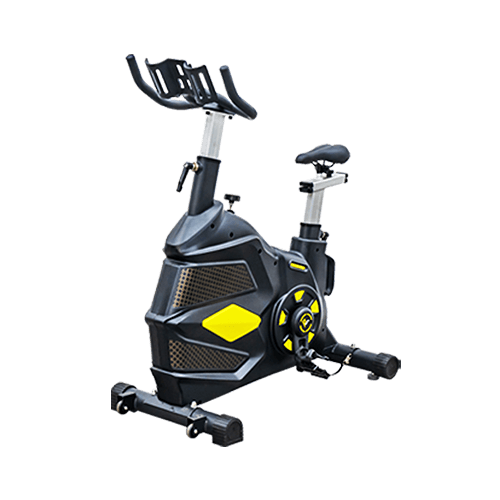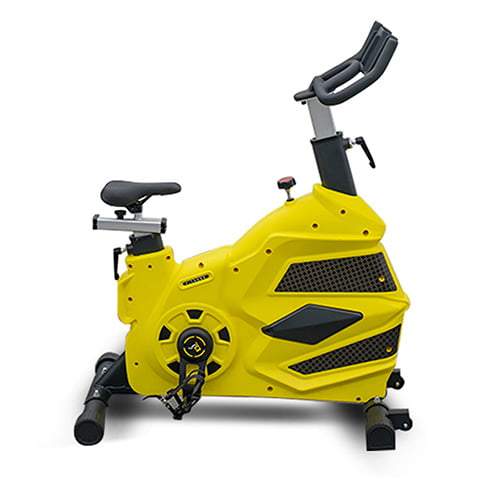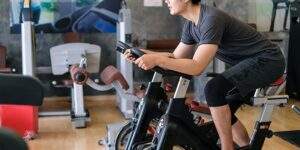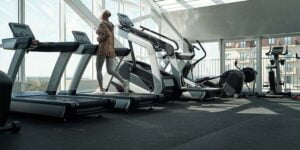Introduction

In today’s fast-paced world, finding time for exercise can be challenging. A low exercise bike, also known as a recumbent bike, offers a practical solution for staying active without the need for extensive gym visits or high-impact activities. Its design provides comfort and accessibility, making it an excellent choice for individuals of all fitness levels, including those with joint issues or mobility concerns. This blog will guide you through how to effectively incorporate a low exercise bike into your daily routine, highlighting its benefits, providing practical tips, and addressing common questions.
Understanding the Low Exercise Bike
What is a Low Exercise Bike?
A low exercise bike, or recumbent bike, is a stationary bicycle designed for a more comfortable and ergonomic workout experience. Unlike traditional upright bikes, it features a reclining seat with back support and pedals positioned in front of the user. This design helps reduce strain on the lower back and joints while providing a smooth, low-impact cardiovascular workout.
Key Features of a Low Exercise Bike:
- Comfortable Seat: A well-padded seat with backrest supports the user’s back and promotes a relaxed posture.
- Adjustable Pedals: Pedals are usually adjustable to accommodate different leg lengths and ensure proper positioning.
- Easy Access: The low, open design makes it easier to get on and off the bike, making it suitable for individuals with limited mobility.
- Integrated Display: Most models come with an LCD screen that tracks time, distance, speed, and calories burned.
Table : Features of a Low Exercise Bike
| Feature | Description |
|---|---|
| Seat | Comfortable with backrest |
| Pedals | Adjustable for various leg lengths |
| Access | Low step-through design for easy mounting |
| Display | LCD screen for tracking workout metrics |
Benefits of Using a Low Exercise Bike
Low-Impact Cardiovascular Exercise
The low exercise bike provides an effective cardiovascular workout with minimal impact on the joints. This is particularly beneficial for individuals with joint issues, arthritis, or those recovering from injury. Regular use can improve cardiovascular health, increase stamina, and aid in weight management.
Improved Comfort and Posture
The recumbent position on the low exercise bike promotes proper spinal alignment and reduces the risk of back strain. The comfortable seating and backrest allow users to exercise for longer periods without discomfort, which can enhance adherence to a regular exercise routine.
Convenient and Accessible
Low exercise bikes are convenient for home use, eliminating the need for gym memberships or travel time. Their design makes them accessible to a broad range of users, including those with limited mobility or balance issues. This accessibility encourages regular use and can contribute to a more active lifestyle.
Variety of Workouts
Modern low exercise bikes offer a range of workout programs and resistance levels, allowing users to tailor their workouts to their fitness goals. Whether aiming for a steady-state cardio session or high-intensity intervals, the bike can be adjusted to meet various exercise needs.
Table : Benefits of a Low Exercise Bike
| Benefit | Description |
|---|---|
| Low-Impact Exercise | Minimizes joint stress while providing cardio benefits |
| Comfort and Posture | Promotes proper alignment and reduces back strain |
| Convenience | Ideal for home use and accessible for various users |
| Workout Variety | Adjustable programs and resistance levels |
Incorporating a Low Exercise Bike into Your Daily Routine
Set Clear Goals
Start by defining your fitness goals. Whether you aim to lose weight, improve cardiovascular health, or simply stay active, setting clear goals will help you stay motivated and track your progress.
Example Goals:
- Weight Loss: Aim for 30 minutes of moderate exercise most days of the week.
- Cardiovascular Fitness: Set a goal to increase your workout duration or intensity over time.
- General Fitness: Incorporate shorter, more frequent sessions into your daily routine.
Create a Workout Schedule
Consistency is key to achieving fitness goals. Develop a workout schedule that fits into your daily routine. Consider the best times of day for your workouts and how to integrate them into your existing commitments.
Sample Schedule:
| Day | Time | Duration | Workout Type |
|---|---|---|---|
| Monday | 7:00 AM | 30 minutes | Moderate Cardio |
| Wednesday | 6:00 PM | 45 minutes | Interval Training |
| Friday | 8:00 AM | 30 minutes | Steady-State Cardio |
Warm-Up and Cool Down
Incorporate a warm-up and cool-down period into your routine to prevent injury and improve flexibility. A 5-minute warm-up could include light pedaling at a low resistance, while a cool-down might involve stretching exercises.
Monitor Your Progress
Use the bike’s display features to monitor your progress. Track metrics such as time, distance, speed, and calories burned to stay motivated and adjust your workouts as needed.
Table : Tracking Metrics on a Low Exercise Bike
| Metric | Purpose |
|---|---|
| Time | Measures workout duration |
| Distance | Tracks how far you have cycled |
| Speed | Monitors cycling speed |
| Calories Burned | Estimates energy expenditure |
Incorporate Variety
To prevent boredom and work different muscle groups, vary your workouts. Alternate between steady-state cardio, interval training, and hill simulations if your bike offers these options.
Combine with Other Exercises
For a well-rounded fitness routine, combine your low exercise bike workouts with other forms of exercise, such as strength training or flexibility exercises. This combination can enhance overall fitness and prevent plateaus.
Stay Motivated
Find ways to keep yourself motivated. This could include setting milestones, tracking progress visually, or incorporating music or podcasts into your workout sessions.
Tips for Maximizing Your Low Exercise Bike Experience

Adjust the Bike for Comfort
Ensure the bike is properly adjusted to fit your body size. The seat should be at a height where your legs are almost fully extended when pedaling, and the backrest should support your lower back comfortably.
Maintain Proper Form
Pedal with a smooth, circular motion to maximize efficiency and reduce strain. Keep your core engaged and avoid slouching to maintain good posture throughout your workout.
Stay Hydrated
Drink water before, during, and after your workout to stay hydrated. Proper hydration is essential for optimal performance and recovery.
Listen to Your Body
Pay attention to how your body feels during and after workouts. If you experience any pain or discomfort, adjust your workout intensity or bike settings accordingly.
Table : Tips for Maximizing Your Low Exercise Bike Experience
| Tip | Description |
|---|---|
| Adjust for Comfort | Ensure seat and backrest are properly positioned |
| Maintain Form | Use smooth pedal strokes and maintain good posture |
| Stay Hydrated | Drink water regularly before, during, and after workouts |
| Listen to Your Body | Adjust intensity and settings based on how you feel |
Conclusion
Incorporating a low exercise bike into your daily routine offers numerous benefits, from low-impact cardiovascular workouts to enhanced comfort and accessibility. By setting clear goals, creating a consistent schedule, and using the bike’s features effectively, you can achieve your fitness objectives while enjoying the convenience of home exercise. Remember to vary your workouts, combine with other exercises, and stay motivated to make the most of your low exercise bike.
FAQ
Q:What is a low exercise bike?
A:A low exercise bike, also known as a recumbent bike, is a stationary bicycle with a reclining seat and backrest. It offers a comfortable and ergonomic workout experience, providing low-impact cardiovascular exercise suitable for various fitness levels.
Q:How often should I use my low exercise bike?
A:For general fitness, aim for at least 150 minutes of moderate-intensity cardio per week, which can be divided into sessions on different days. For weight loss or specific fitness goals, you may need to increase the frequency or intensity of your workouts.
Q:Can I use a low exercise bike if I have joint problems?
A:Yes, a low exercise bike is an excellent choice for individuals with joint problems or arthritis. Its low-impact design reduces strain on the joints while providing an effective cardiovascular workout.
Q:How do I adjust the seat on a low exercise bike?
A:To adjust the seat, follow the bike’s instructions for height and position. Ensure that your legs are almost fully extended when pedaling and that your back is supported by the backrest. Proper adjustment helps maintain comfort and efficiency during your workout.
Q:Are there any specific warm-up and cool-down exercises for low exercise bikes?
A:A good warm-up for a low exercise bike includes 5 minutes of light pedaling at low resistance to gradually increase your heart rate. For cooling down, continue pedaling at a low intensity for 5 minutes, followed by stretching exercises focusing on the legs and lower back.



